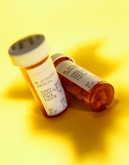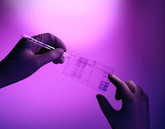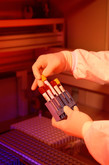Biosimilars
Biosimilars boost for South Korea
The South Korean Government has pledged to promote the biosimilars industry and plans to invest in the biosimilars industry in order to make Korea a market leader. The government will provide both financial and institutional support and is aiming to take a 22% share of the global market by 2020.
Gedeon Richter sign biosimilars’ agreement with Mochida
On 14 December 2010 Budapest-based Gedeon Richter and Tokyo-based Mochida Pharmaceutical (Mochida) announced that the two companies have entered into a comprehensive and long term license and collaboration agreement with respect to development and marketing of Richter’s biosimilar product portfolio.
Merck and Parexel form strategic alliance for biosimilars
Merck Sharp and Dohme (MSD – known in the US and Canada as Merck) and Parexel, a leading global biopharmaceutical services provider, announced on 12 January 2011 that they have entered into an alliance by which Parexel will provide a broad range of clinical development services for designated biosimilar candidates to Merck BioVentures. Merck BioVentures is a division of MSD that focuses on biosimilars.
Sandoz announces biosimilar rituximab
Sandoz, the generic drug division of Swiss drug giant Novartis AG, announced on 10 January 2011 a phase II clinical trial for a biosimilar version of leading monoclonal antibody rituximab.
Contract manufacturing: top firms are investing
Lonza Group Ltd and ScinoPharm Taiwan Ltd, two leading manufacturers of active pharmaceutical ingredients (APIs), have struck separate deals to expand their capabilities to make biological drugs.
Market access for biopharmaceuticals and biosimilars: a case study
Filgrastim is one of the first biopharmaceuticals for which biosimilars have entered the market. This case study illustrates the health economic challenges and the issues that arose in the R & D, registration, pricing and reimbursement of the biopharmaceutical and its biosimilars [1].
The case for health economic studies on biopharmaceuticals
In the not too distant future, patents will expire on some major biopharmaceuticals, such as interferons, insulins and granulocyte-colony stimulating factors [1]. This is likely to lead to the market entry of a number of biosimilars. A health economic approach to market access for biopharmaceuticals and biosimilars serves to aid researchers and decision makers in pharmaceutical companies and government to identify those products in the development process that are likely to be safe, effective and cost-effective. This approach should also guide the rationale for registration, pricing and reimbursement decisions.
Biopharmaceuticals: the start of personalised medicine
Biopharmaceuticals typically bind to their biological target, e.g. a protein linked to a disease [1]. Therefore, a biopharmaceutical is likely to be particularly efficacious in a specific subgroup of the patient population. For instance, trastuzumab is a monoclonal antibody that binds to the human epidermal growth factor receptor 2 (HER2) protein and has been shown to be efficacious in the treatment of patients with metastatic breast cancer whose tumours over-express HER2 [2]. This has implications for the clinical development of biopharmaceuticals in that it highlights the need to select the most responsive target population, to collect information on relevant patient characteristics, and to identify suitable biomarkers for responders [3]. It could be argued that, in this respect, biopharmaceuticals involve a paradigm shift towards personalised medicine.
Health economic challenges for biosimilars
Biopharmaceuticals represent a fast-growing segment of the pharmaceutical market, making up one third of products in the development pipeline and accounting for 9% of pharmaceutical expenditure [1]. Whereas the first generation of biopharmaceuticals tended to consist of first-in-class products addressing unmet clinical needs in small populations, e.g. bevacizumab for metastatic colorectal cancer, the current wave of products targets larger populations, e.g. insulins for type 2 diabetes mellitus [2].
Biosimilars’ hurdles in the US
Europe serves as a model for other countries looking to define their own regulatory approval criteria. However the opposing interests of biosimilar and innovative companies is resulting in delays to the development of biosimilars in the US.













